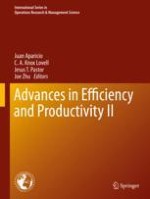2020 | OriginalPaper | Buchkapitel
European Energy Efficiency Evaluation Based on the Use of Super-Efficiency Under Undesirable Outputs in SBM Models
verfasst von : Roberto Gómez-Calvet, David Conesa, Ana Rosa Gómez-Calvet, Emili Tortosa-Ausina
Erschienen in: Advances in Efficiency and Productivity II
Aktivieren Sie unsere intelligente Suche, um passende Fachinhalte oder Patente zu finden.
Wählen Sie Textabschnitte aus um mit Künstlicher Intelligenz passenden Patente zu finden. powered by
Markieren Sie Textabschnitte, um KI-gestützt weitere passende Inhalte zu finden. powered by
